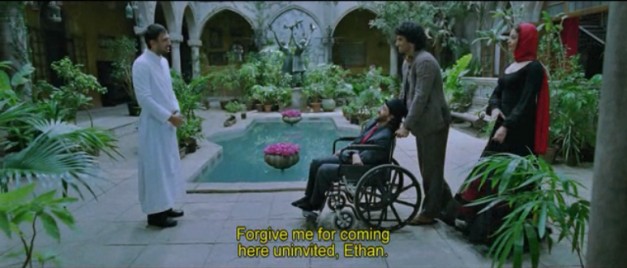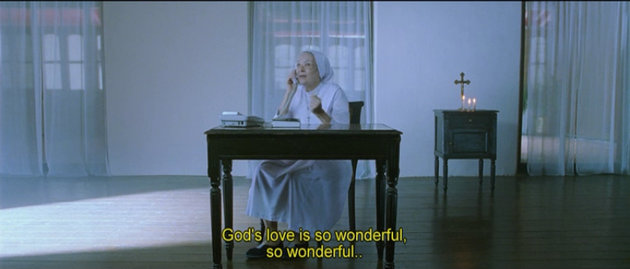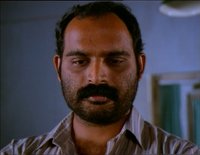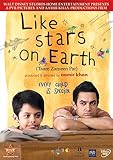from IBN Live:
[url]http://ibnlive.in.com/news/rare-diseases-now-highlighted-by-indian-cinema/247556-8-66.html[/url]
Bollywood | Posted on Apr 10, 2012 at 07:31pm IST
Rare diseases now highlighted by Indian cinema
New Delhi: Progeria, autism, dyslexia, Alzheimer’s, Asperger syndrome — movies on these rare diseases would have typically been the themes of documentaries until a few years ago. But not any more.
Bollywood, so associated with escapist fare, is opening its heart and investing money in creating awareness about such diseases through commercial scripts, with successful stars and effective marketing.
Filmmaker Anurag Basu’s upcoming ‘Barfi!’ is a case in point. At its heart, the movie is said to be a romantic comedy, but the story is woven around how love blooms between a deaf, mute yet happy-go-lucky man essayed by Ranbir Kapoor, and an autistic girl, played by Priyanka Chopra.
Talking about the film, Ranbir said: “It’s about two dysfunctional people who bond together in the nicest of relationships, one that is sweet, touching and heart-warming.”
Most Bollywood products in the past showcased the visually and physically challenged as well as the deaf as comical or pitiable characters except films like ‘[easyazon-link asin=”B000OUVHBC” locale=”us”]Koshish[/easyazon-link]’. But the approach, treatment and prominence to the characters have undergone a mature change over the years.
In 2003, ‘[easyazon-link asin=”B0001EQI8I” locale=”us”]Koi… Mil Gaya[/easyazon-link]’ showcased Hrithik Roshan in the role of a developmentally disabled man, while Aparna Sen’s National award-winning film ’15 Park Avenue’ put the spotlight on schizophrenia.
Konkona Sen Sharma, as the schizophrenic Meethi in ‘[easyazon-link asin=”B000I0RVD6″ locale=”us”]15 Park Avenue[/easyazon-link]’, drove the complexities of the disease with ease to the audience’s heart.
The film was in English.
“That’s because it deals with schizophrenia and we need a more discerning audience,” Sen had told IANS earlier.
Nevertheless, she made sure all the nitty-gritty were taken care of before setting out to entertain viewers.
“We know someone very close to us who’s schizophrenic… a very close relative. So Konkona got to study the traits very carefully. We also had professional medical assistance to get the nuances right. But ultimately after getting all the details right I made sure it was a human interest story,” said Sen.
Schizophrenia was also highlighted with Arshad Warsi in ‘Krazzy 4’, but not so effectively.
Another disease, Alzheimer’s, which affects memory, thinking and behaviour, was brought alive on screen by Kajol in ‘[easyazon-link asin=”B001GJ4U3C” locale=”us”]U Me Aur Hum[/easyazon-link]’ and by megastar Amitabh Bachchan in Sanjay Leela Bhansali’s ‘Black’.
The latter also proved to be an inspirational story for the deaf and blind, with Rani Mukerji in the role of a girl, who overcomes her disabilities with the help of her teacher, and shines academically.
In 2007, Aamir Khan’s directorial debut ‘Taare Zameen Par‘ narrated the problems faced by an eight-year-old boy suffering from dyslexia, a learning disability. The heartwarming movie was a window to worried parents, who push their children to achieve academic excellence without trying to understand their problems.
The film was not only a huge commercial hit, it also spread the word and many parents learnt an important lesson from it.
‘[easyazon-link asin=”B001N6FPRI” locale=”us”]Taare Zameen Par[/easyazon-link]’ was instrumental in bringing about a shift in the mindset for films dealing with diseases, says film critic Omar Qureshi.
“Earlier, Bollywood films used to show how characters who used to behave strange due to some ailment were slapped or mocked at. ‘Taare…’ and ‘Koi… Mil Gaya’ changed that a lot,” he said.
“Years back, in 1974, there was a Mehmood movie ‘[easyazon-link asin=”B000H4Z60I” locale=”us”]Kunwara Baap[/easyazon-link]’. It moved everyone to tears with the story on polio vaccination. What a forward vision he had back then. But it’s great to see how mainstream heroes are taking up roles creating awareness about diseases,” Qureshi told IANS.
In 2008, viewers got a taste of amnesia on screen. Aamir Khan was shown as a patient of amnesia, a state of short-term memory span, in the superhit film ‘[easyazon-link asin=”B001TLWRBO” locale=”us”]Ghajini[/easyazon-link]’.
The following year, action film ‘Luck’ saw heartthrob Imran Khan with dextrocardia, a rare medical condition in which a person is born with his heart on the right side.
The same year, Amitabh gave a noteworthy performance as Auro, an innocent child suffering from progeria in ‘[easyazon-link asin=”B0032M74ZM” locale=”us”]Paa[/easyazon-link]’. Progeria causes premature aging among children and is a rare disease; so the movie managed to create a buzz about it across the country.
The year 2010 saw superstar Shah Rukh Khan as Rizwan Khan suffering from Asperger syndrome, which causes difficulty in social interaction.
Later, Hrithik essayed a paraplegic, who appeals for euthanasia in Bhansali’s ‘Guzaarish‘.









